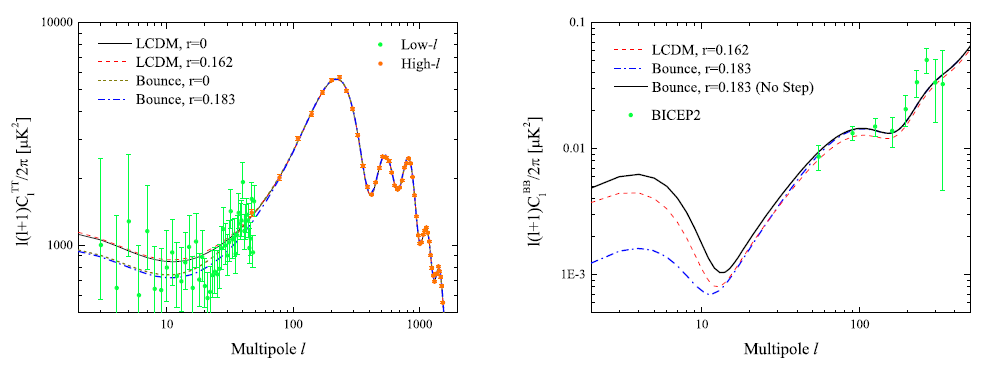New progress in early universe cosmology
Scientists have recently made an important step in understanding the cosmology of the early Universe, with a result just published in Physical Review Letters (Phys. Rev. Lett. 112, 251301 (2014)). The research group includes Prof. XIA Junqing, Prof. LI Hong and Prof. ZHANG Xinmin from IHEP and Dr. CAI Yifu from McGill University.
According to modern cosmology, our universe experienced a short period of exponential expansion after its birth, which is known as cosmic inflation. During this stage, quantum fluctuations of spacetime can lead to the generation of primordial gravitational waves and then leave a special pattern of the polarization signatures in the cosmic microwave background (CMB).
On March 18th 2014, scientists at the Harvard-Smithsonian Center for Astrophysics announced that these special CMB polarization signals were very likely detected by a South Pole project known as BICEP2 (Phys. Rev. Lett. 112, 241101 (2014)). This result, however, is in severe tension with the Planck satellite observational data released by the European Space Agency last year.
Based on the BICEP2 data, Xia et al. performed a global fitting analysis by combining the Planck data. The result implies that a proposed model of matter-bounce inflation can provide a unified interpretation of these two data sets (as shown in the figure). An article in the journal Physics on June 19th commented: “If both the BICEP2 and Planck measurements hold up after further observational scrutiny, one possible cosmological scenario that could explain both involves a “bounce” that occurs before the inflationary era. A bounce connotes a universe that expands from a finite density state following the collapse of an earlier cosmological phase. The change in effective initial conditions can lead to changes in the fluctuation spectrum remaining after inflation.”
The study of early universe physics is a hot topic in the fields of physics and astronomy. Focusing on this topic, Prof. ZHANG Xinmin and his cosmology group at IHEP have devoted years of effort and gradually established a new cosmological paradigm knows as Quintom Bounce, and studied associated perturbation information based on effective field theory. In 2008, they predicted the observational signatures of Quintom Bounce in the CMB and the relevant result was published in Physical Review D as a rapid communication. In 2010, Cai, Xia et al. performed a comprehensive review of Quintom cosmology in the internationally famous review journal Physics Reports.

Figure Caption: Theoretical CMB power spectra for the best fit LCDM models and bounce inflation models, as well as the Planck and BICEP2 observational data.
The paper published in Physical Review Letters:
http://journals.aps.org/prl/abstract/10.1103/PhysRevLett.112.251301
The article in Physics published by American Physics Society: http://physics.aps.org/articles/v7/65